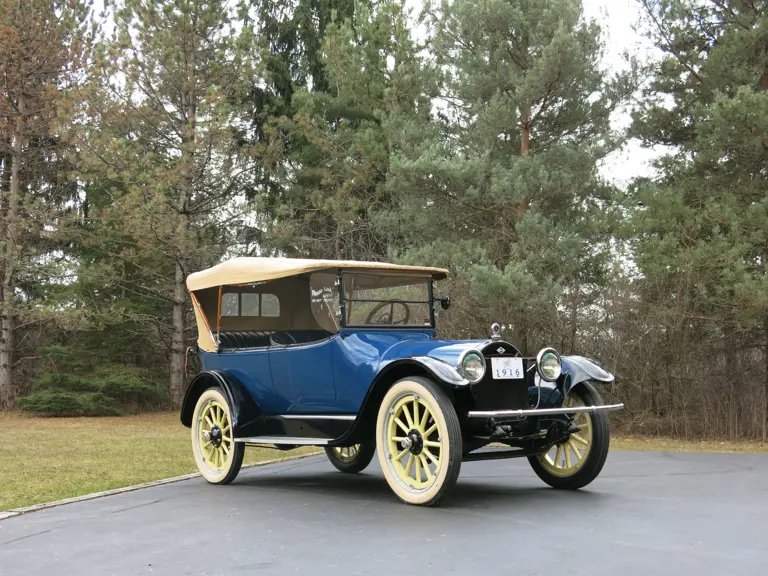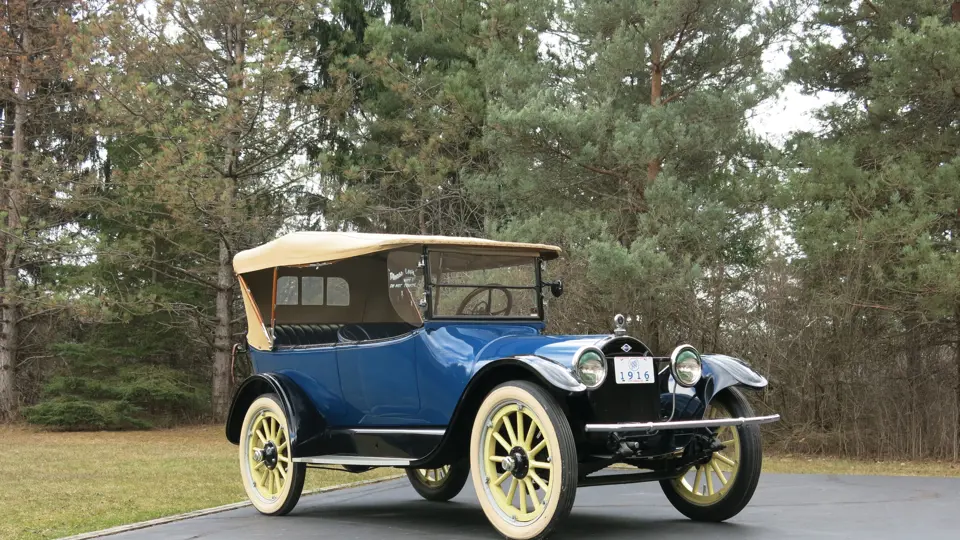 | Auburn, Indiana
| Auburn, Indiana
David Dunbar Buick most significant claim to fame was not the automobile that bore his name, but his development of a patented method of affixing porcelain to cast iron and giving the world the white bathtubs that we know today. In 1899, he decided that mechanical inventions were more exciting than plumbing and sold his successful plumbing business so he could tinker with mechanical devices.
His first automotive company was called Buick Auto-Vim and built gasoline engines for farm and marine use. This company was reorganized in 1902 to Buick Manufacturing Company. He joined forces with two other engineers and by 1903 had developed what would become the famous Buick Valve-In-Head engine. Later in 1903, they had produced their first automobile.
By now, Buick had spent all of his capital in developing one prototype vehicle and no longer had funds to produce anything else. James Maxwell bought the company in early 1904 and resold the company to William Durant in November of that year. 1905 saw the first full year of production. The new Buicks were powered by a horizontally-opposed, two-cylinder overhead valve engine coupled to a planetary transmission and a chain-driven rear end. Sales of the new Buick were quite good with 1,400 vehicles being sold in 1905 and again in 1906.
Model year 1907 saw the introduction of a roadster model on the two-cylinder chassis and the introduction of a new four-cylinder model. Total sales for that year were 4,641 vehicles. The success of Buick gave Durant the basis for his General Motors Company, which he would propose and incorporate in 1908. By the end of the year, Buick was part of the new umbrella company and David Dunbar Buick was without a job.
Buick continued to be the foundation for the new company-with over 70-percent of General Motors sales being attributed to the variety of models that Buick offered. In 1909, Buick offered nine models, which were comprised of two- and four-cylinder vehicles. The two-cylinder models continued into the 1910 calendar year and were eliminated in 1911 in favor of the four-cylinder models.
In 1914, Buick introduced its first six-cylinder model, called the B-55. By 1916, all Buick would be powered with six-cylinder engines.
For the 1916 model year, Buick offered three models, which were all powered by six-cylinder engines in a range of size and horsepower. The D-45 was the smallest of the models and was offered with the smaller horsepower engine. This example was built in Canada. Canadian built Buicks are referred to as McLaughlin models.
This D-45 McLaughlin Buick five-passenger touring car is an older restoration of a very original vehicle. It is an accurate and proper restoration that has been well-used and its restoration is showing overall wear and age. This Buick was purchased from noted Canadian vintage car dealer, Jim Miller, and was one of the first vintage vehicles purchased for the Weaver collection.
The body remains quite solid and shows no signs of damage or repair. The doors, hood and fenders fit well. The vehicle has been refinished in the proper shade of blue and black. The older, lacquer paint shows significant overall wear with large areas of paint cracking and with discoloration. This car has been appropriately fitted with a period correct, black interior, which has remained in good condition, but shows wear. The tan folding top is worn, discolored and stained in areas. The dashboard retains all of its proper gauges and controls, which are generally clean. The car retains its correct headlamps, rear mounted spare tire, etc.
The chassis appears to have been restored at some point and painted an incorrect yellow color. The chassis shows overall signs of usage and wear. The engine also shows signs of usage and has not been cleaned or detailed in many years. The engine is fitted with its proper starter/generator/distributor combination unit. It has an incorrect, later carburetor. The wood artillery wheels appear solid and are fitted with older 33- x 4-inch tires. It should be noted that this vehicle has not been operated in many years and will require a significant mechanical servicing in order to make it a reliable driving vehicle.
Overall, this is a nice example of a late, pre-World War I Buick touring car that would benefit from either a mechanical servicing and/or a full or partial cosmetic restoration.





